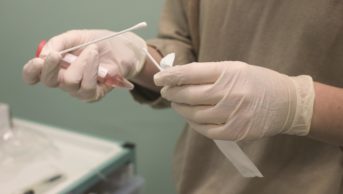
Phanie / Alamy
GPs are continuing to prescribe outdated antibiotics for the treatment of gonorrhoea, according to research reported in BMJ Open
[1]
.
Analysis of UK electronic health records reveals that ciprofloxacin accounted for 42% of GP prescriptions for gonorrhoea in 2006 and 20% in 2011, despite treatment guidelines issued in 2005 stating that ciprofloxacin should not be used and that cephalosporins should be favoured instead.
“Antimicrobial resistance in gonorrhoea is a global problem and may become an issue for chlamydia in future,” write the authors, who were led by Sally Wetten from Public Health England. “Practitioners should be alert to revisions to national treatment guidelines and of treatment failure in their patients.”
The researchers examined diagnosis and treatment of patients with chlamydia or gonorrhoea between 2000 and 2011, using information from the UK Clinical Practice Research Datalink and national sexually transmitted infection (STI) surveillance databases.
There were approximately 1.4 million chlamydia and 233,000 gonorrhoea diagnoses in total. The proportion of patients with chlamydia who were treated by community and specialist STI services rather than GPs approximately doubled over the study period, whereas for gonorrhoea the proportion of diagnoses made by GPs versus STI clinics fluctuated.
More than 90% of patients overall were prescribed a recommended antimicrobial. Among patients with chlamydia, the proportion of non-recommended regimens fell from 7.0% in 2000 to 1.5% in 2011. For gonorrhoea, ciprofloxacin – which was not recommended after 2005 – was the most commonly prescribed antibiotic, comprising 41% of prescriptions overall.
“Ongoing monitoring of diagnoses and treatment of STIs outside genitourinary medicine services is essential,” write the researchers.
References
[1] Wetten S, Mohammed H, Yung M et al. Diagnosis and treatment of chlamydia and gonorrhoea in general practice in England 2000–2011: a population-based study using data from the UK Clinical Practice Research Datalink. BMJ Open 2015;5:e007776. doi:10.1136/bmjopen-2015-007776.


